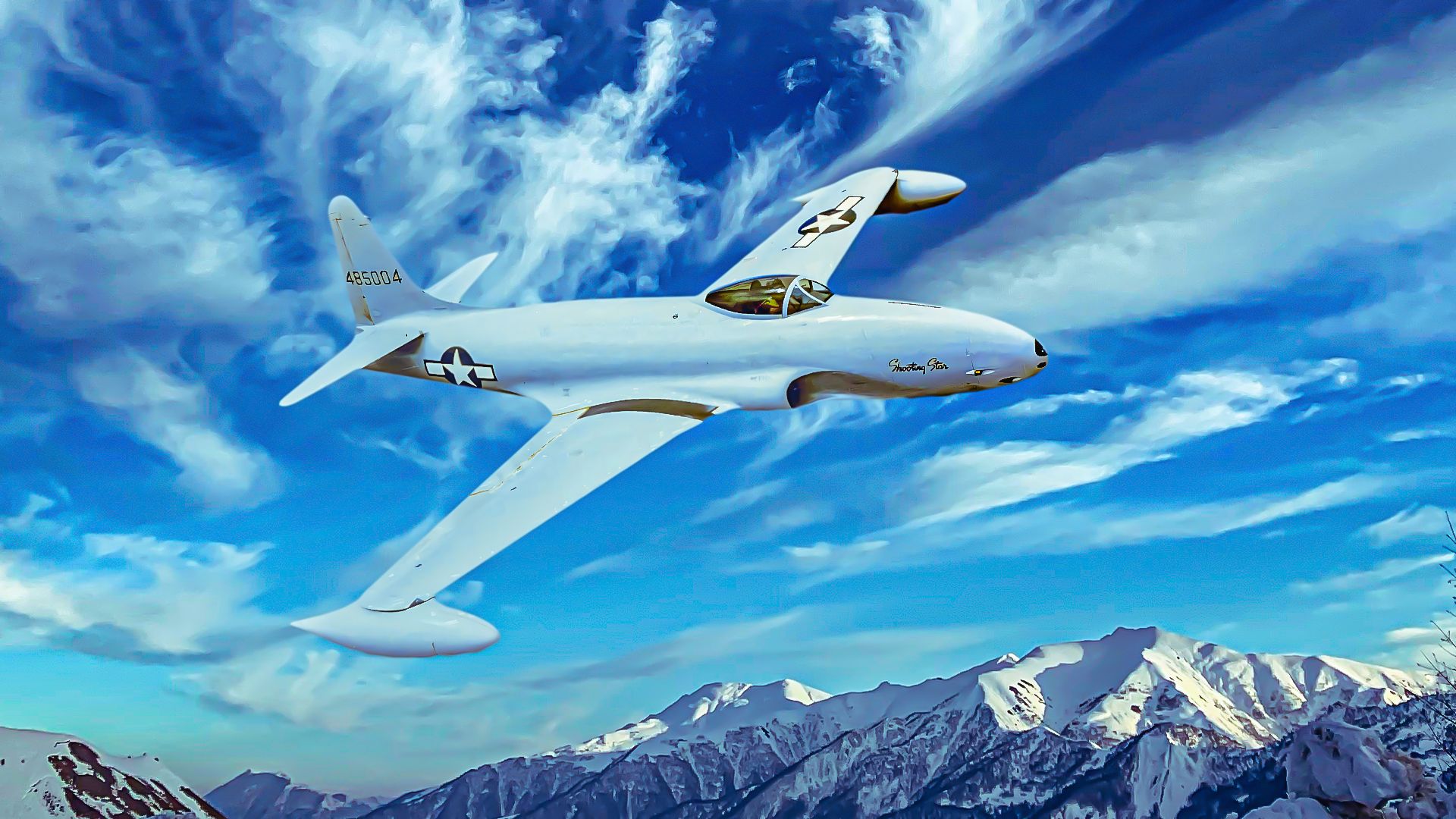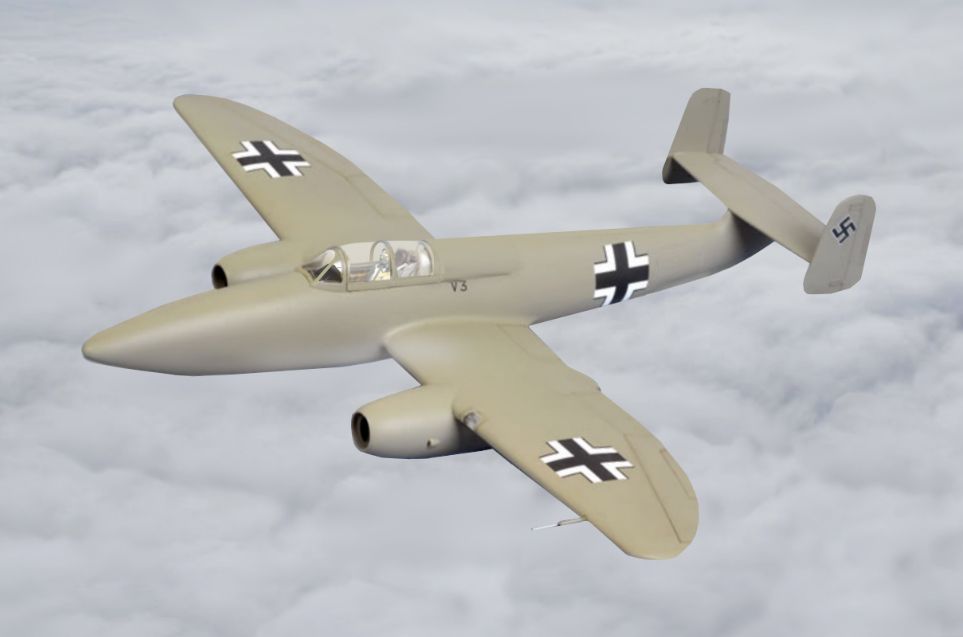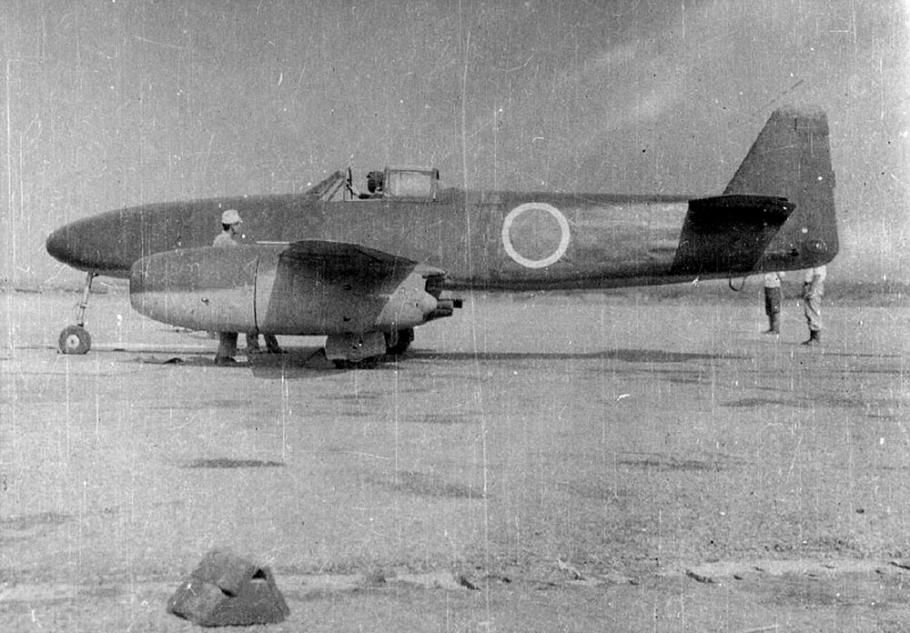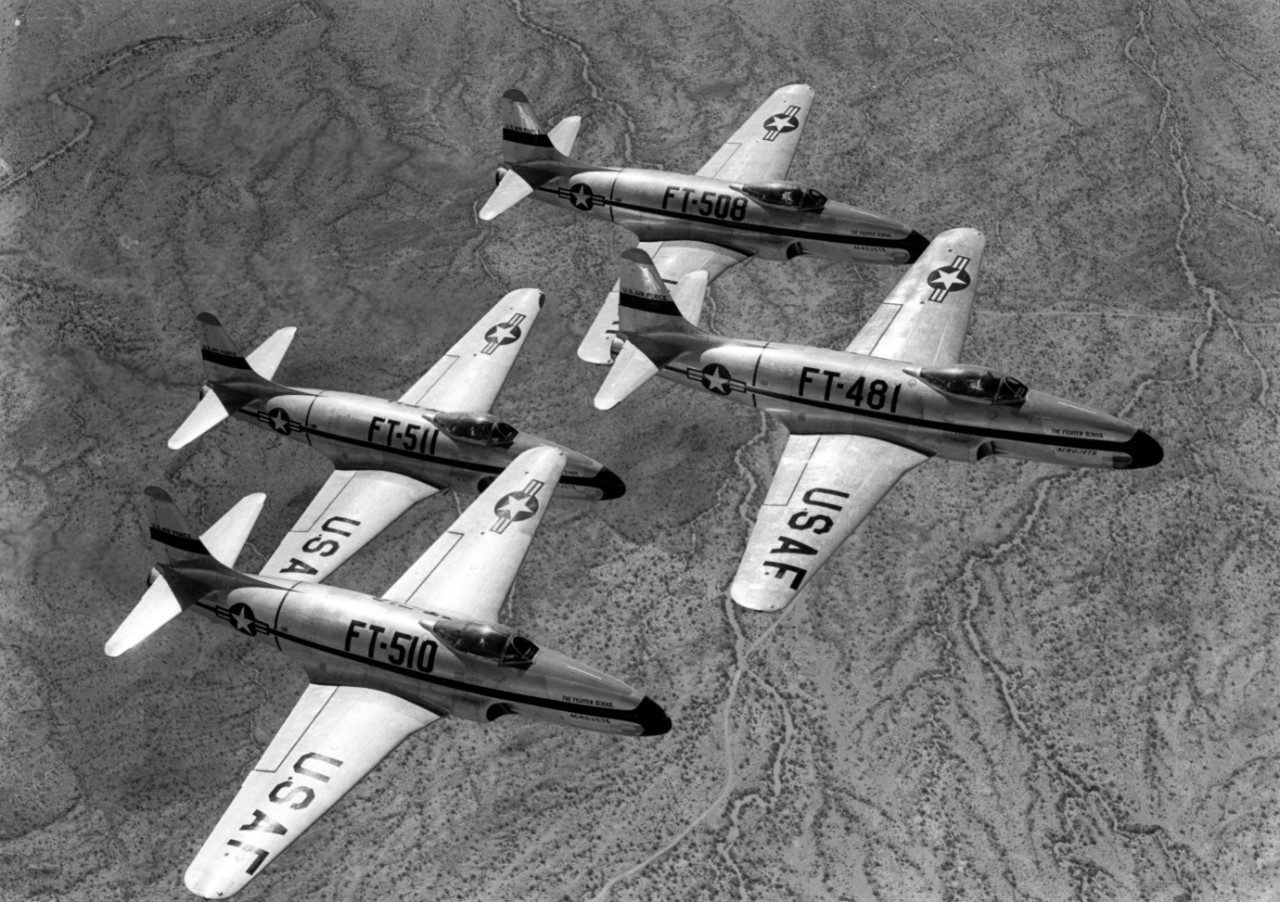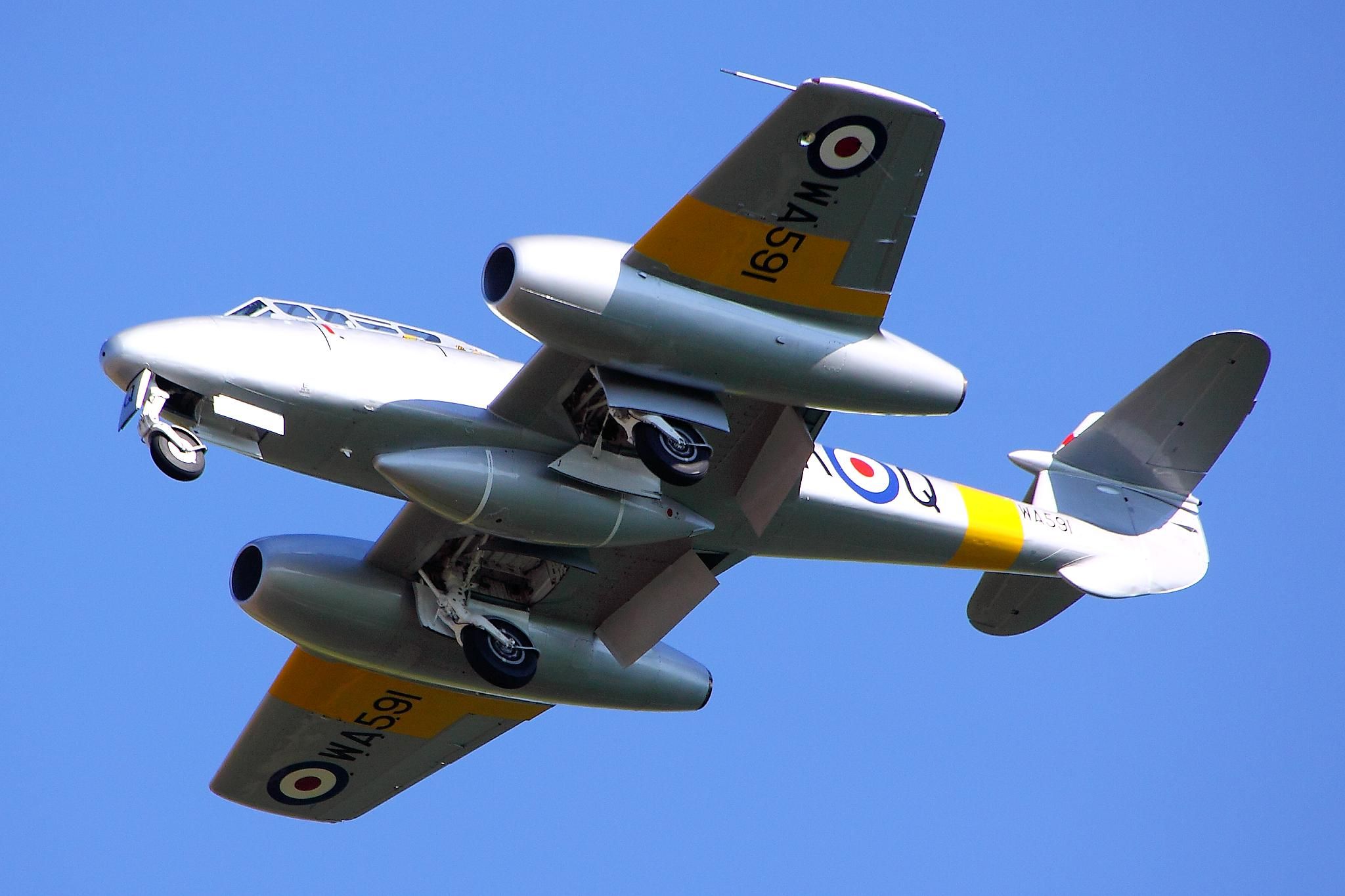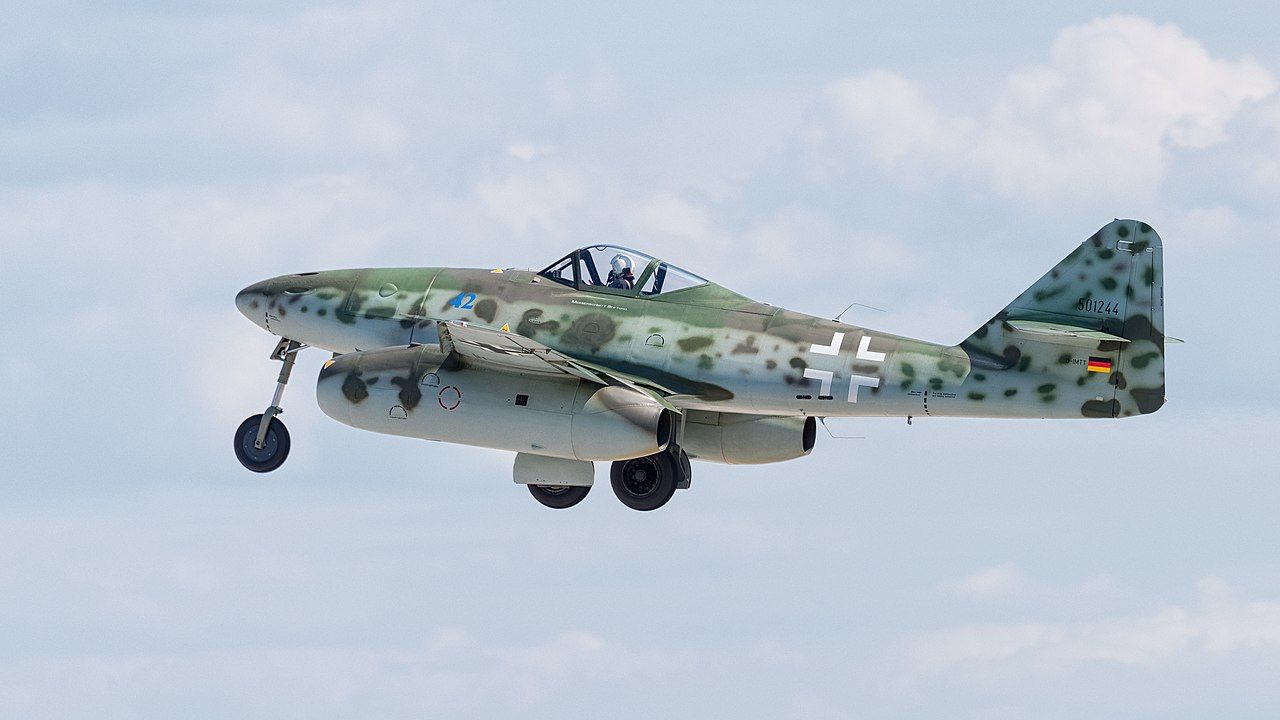Summary
- He 280, 1st jet fighter to fly, developed ejector seat
- Nakajima Kikka, 1st Japanese jet, influenced by Me 262
- P-80 Shooting Star, 1st US jet, outclassed in Korean War
As World War II drew to a close, the fighter jet age had dawned. Great Britain and Germany led the charge and had operational fighter jets by May 1945. The United States (with the P-50 Shooting Star) and Japan followed behind and were nearly fielding their first fighter jets. Italy had a fighter jet program, but it was defeated in 1943, and the Soviet Union was far behind (the USSR quickly caught up post-war with captured German technology and reverse-engineered British jet engine technology). Here are five early fighter jets of World War II.
5
Heinkel He 280
The Heinkel He 280 first flew in September 1940
|
First flew: |
1941 (with jet engine power) |
|---|---|
|
Role: |
fighter |
|
Notable for: |
First jet fighter to fly, first jet to use ejector seat |
The twin-engined Heinkel He 280 was groundbreaking in developing fighter jets and could reach speeds of around 500 mph (much faster than its contemporary fighters). The Heinkel He 280 became the first fighter jet to fly in the world and built on the success of the He 178 (the world’s first aircraft to fly with a turbojet engine in August 1939).
Despite its advanced design, the Heinkel He 280 was canceled and sidelined in favor of the Messerschmitt Me 262 and only remained in the prototype stage. Its development was an important step in developing fighter jets. It has been suggested that if the Germans had focused on the He 280, it would have entered service before the Me 262 and would have had some advantages over it.
4
Nakajima Kikka
The Nakajima Kikka first flew in August 1945
|
First flew: |
August 1945 |
|---|---|
|
Role: |
fighter/bomber |
|
Notable for: |
First Japanese fighter jet to fly |
As the Japanese Empire crumbled under the US-led island-hopping campaign and strategic bombing of the home islands, the disintegrating empire faced an existential threat and severe resource constraints. This drove the Japanese down different developmental roads. On the one hand, Japanese aircraft design went dramatically backward with the construction of disposal, single-mission, purpose-built kamikaze aircraft; on the other hand, Japan also rushed to develop advanced fighter jets.
Photo: National Air and Space Museum
The Nakajima Kikki first flew in August 1945 – the day after the US dropped the atomic bomb on Hiroshima. Days later, Japan surrendered. The single completed prototype only flew once and was Japan’s first turbojet-powered aircraft. The Kikki’s design was heavily influenced by the German Me 262 and bore a similar appearance. However, it is considered less advanced (while also being smaller).
3
P-80 Shooting Star
The P-80 Shooting Star was introduced in 1945
|
First flew: |
January 1944 |
|---|---|
|
Role: |
Fighter/interceptor |
|
Notable for: |
First US fighter jet, immensely successful T-33 Shooting Star trainer variant |
For the duration of World War II, the US lagged behind the British in jet development and chose to focus more on existing proven systems. After the US became aware that the Germans were in an advanced state of developing fighter jets, it doubled down on building its own. The first P-80 Shooting Star prototype flew with British jet engines.
Photo: Lockheed Martin
The first two operational US P-80 Shooting Stars seem to have arrived in Italy in the twilight days of the war, and it seems they were lost to non-combat causes. The P-80 Shooting Star went on to serve extensively in the Korean War, where it was quickly outclassed by the Soviet MiG-15 and then superseded by the North American F-86 Sabre.
2
Gloster Meteor
The British Gloster Meteor was introduced in July 1944
|
First flew: |
March 1943 |
|---|---|
|
Role: |
Fighter/interceptor |
|
Notable for: |
First British jet aircraft, first Allied jet, first jet to destroy a jet-powered target |
According to the Imperial War Museums, the British Gloster Meteor was World War II’s only Allied fighter jet to see combat. It shot down German V1 rockets as they were fired against London, although it was unable to intercept the more capable German V2 rockets. As an early jet, it was quite underpowered (more powerful engines were soon built).
Almost 4,000 Gloster Meteors were built and regarded as reliable aircraft—although slower than some other contemporary aircraft. Incredibly, Aero Key reported in 2023 that Martin Baker (a world leader in ejection seats) is still using two ancient Gloster Meteors as testbeds for its ejection seats.
1
Messerschmitt Me 262
The Me 262 first entered service in April 1944
|
First flew: |
July 1942 (with jet engines) |
|---|---|
|
Role: |
Fighter/interceptor, fighter-bomber |
|
Notable for: |
World’s first operational fighter jet |
The Messerschmitt Me 262 was the world’s first operational fighter jet, entering service a few months before the Gloster Meteor. While plagued with many developmental issues that often accompany revolutionary technology, it was considered far superior to Allied piston-engine fighters (it was faster and more heavily armed than the British Gloster Meteor). Over 1,430 Me 262s were built.
However, an individual machine’s performance is only one piece in the wider picture of effectiveness. By the time it entered service, the Luftwaffe was collapsing due to fuel shortages, attrition, poor pilot training, and other issues. This meant that the Me 262’s overall impact on the battlespace was limited. The Allies also adapted by destroying Me 262s on the ground and during takeoff and landing.

